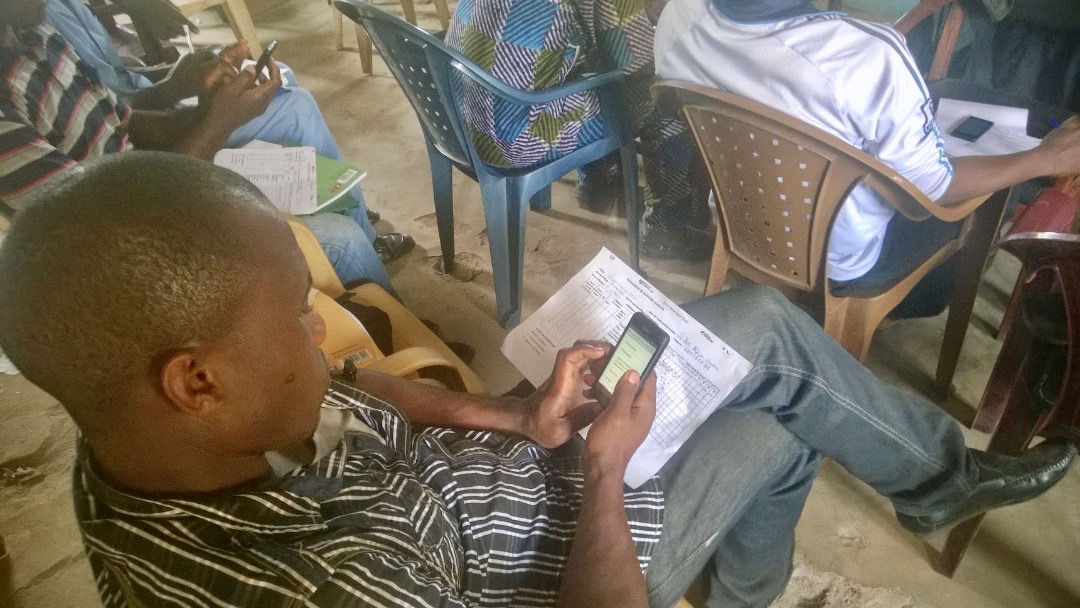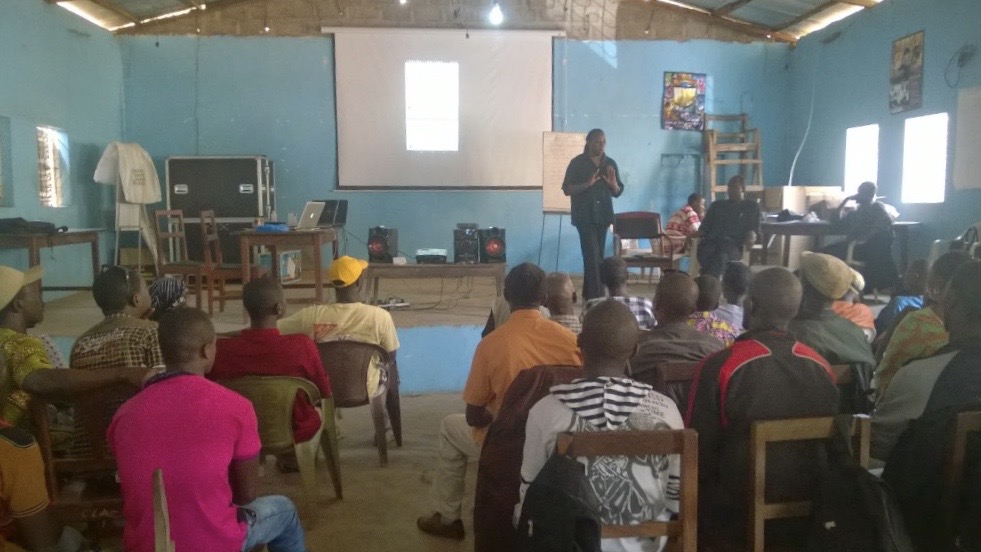A Human-Centered Approach to Digital Contact Tracing Programs

Anne Liu, an expert on mobile tools for disease surveillance, shares her experience supporting the Government of Guinea in launching a national digital contact tracing program during the 2014 Ebola epidemic.
Digital contact tracing applications have the potential to be “more efficient and facilitate implementation on a larger scale” than traditional contact tracing processes.
However, as with any technology intervention, digital contact tracing can only work as part of a larger public health effort and strong human-centered processes.
While deploying CommCare in Guinea during the West Africa Ebola outbreak in 2014, we learned that technology platforms could only succeed if bolstered by a strong team. This can include contact tracers, supervisors, volunteers, partners, and the community that the technology is intended to support.

We’ve compiled three key considerations for strengthening digital contact tracing systems to support this team:
(1) Center digital technology around the support of contact tracers
The foundation of a strong contact tracing program are the contact tracers. Their ability to build trust with community members is vital to the program’s success and no app can ensure that alone.
In addition to enrolling contacts and conducting contact monitoring, a contact tracer may provide health communications and psychosocial support once visits begin. During the West Africa Ebola outbreak, contact tracing visits would occur at households in the community daily over the course of the 21 day Ebola incubation period. This period of time was key to help educate at-risk contacts, provide psychosocial support, and combat stigma.
To this end, a contact tracing application should be designed to first and foremost support a contact tracer’s daily workflows, helping to organize and schedule visits, provide supportive aids to increase effectiveness of patient interviews (with tools like multimedia), and streamline data collection efforts.
While the platform may be also used for performance monitoring, this use case should not eclipse the priority of meeting the end users’ needs. Look to complement performance monitoring with iterative design with end users, robust training methods, and supportive supervision to maximize usage.
- Mixed-methods training: In Guinea, we used blended learning techniques to train contact tracers on the CommCare application. This included traditional classroom trainings with presentations and role-play, but also incorporated short 1-2 min video tips directly into the application for contact tracers to use for periodic refreshers.
- Iteration to support end users: Guidelines can inform the initial development of the tool, but must often be adapted when implemented in communities. Balance compliance to protocols with what is realistically happening during visits, and adapt the tools where possible to align with the workflow users follow on the ground.
- Peer support: If there are individual contact tracers who still face challenges with using technology, think through creative mechanisms to support them. In Conakry, some contact tracers – many of whom were a bit older – were unfamiliar with smartphones and faced challenges with using the software despite training offerings, supportive supervision, and design updates. However, these contact tracers often had the strongest relationship with community members. To this end, the government of Guinea recommended pairing some contact tracers who had strong relationships but poor uptake of tool with tech savvy contact tracers in order to maximize each other’s strengths.

(2) Ensure the effective use of data collected from contact tracing programs
A digital contact tracing application that has strong uptake amongst contact tracers can generate a wealth of information about communities. This data can be valuable for public health officials to understand transmission trends, community awareness and preparedness, and gaps in contact tracing coverage.
Tableau was a data visualization tool that was used for contact tracing dashboards for the Guinea Ebola project. Usage analytics built into the platform allowed us to identify at the outset that dashboard views were low. This prompted a redesign of dashboards with volunteer Tableau experts to meet government end user needs – e.g. building “past 7 day” key performance dashboards to facilitate a quick snapshot of activities.
Additionally, Columbia University supported the Government of Guinea in hiring locally-based information officers. Their job is to sit in district offices and support local government health offices with analysis and effective data use. For instance, some of the information officers’ responsibilities include basic troubleshooting of the mobile phones, daily review of data submissions, and communication of key trends to local response teams.

(3) Leverage partnerships with communities and both local and global organizations
Strong relationships with the local communities are vital to the success of new technology. Community members can help break the stigma surrounding new tools and generate excitement for new programs. Further, community members may be able to provide support in implementation, from initial set up to ongoing maintenance.
In Guinea, community members rallied to help address the challenge of configuring hundreds of donated phones. This included adjusting phone settings for language, date, and time, as well as the installation of application locking software and battery saving widgets. Because this process could take up to 15-20 minutes per phone, youth volunteers from The Blue Zones and the Hamdallaye 2 community volunteered manpower to help with set up and distribution, ultimately completing the set up for the entire fleet of devices in a single day.
Country- and global-level partnerships can further bolster these community partnerships. In Guinea, partnerships with ICT companies helped to provide quick distribution of key hardware and data plans. Ericsson donated 1,000 Sony Xperia E1 phones. UN Mission for Ebola Emergency Response donated an additional 580 phones. Solektra international donated solar charges to facilitate phone charging in addition to 33 solar panels to be installed in government offices that would be consuming the data. And a partnership with the Guinea branch of telecommunications company Orange helped to provide a closed user group, monthly data plan, and monthly auto-recharge system to mitigate against disruption to community activities. Communities alone rarely have the resources to facilitate these efforts, so larger partnerships can prove vital to a program’s success.
Applying Lessons Learned to COVID-19 Programs
Digital technology can be a lever to bolster public health program activities. And we have found that with COVID-19, traditional methods may struggle more than we can afford. As such, many countries have been quick to adopt new digital technologies for COVID-19 contact tracing, and we are witnessing an explosion of innovation from both old and new players on the technology front to try to tackle the disease.
While these new technologies may be promising, deployments must remember that technology can only be successful if implemented with a human-centered approach. Lessons from our experience in implementing CommCare in 2014 during the Ebola epidemic showed that centering our program around people – whether it was leveraging end user input into design, offering mixed-methods training, or building partnerships with local community groups and global stakeholders – was critical to a successful deployment.
If you are considering adopting technology to support your broader public health effort, we encourage you to take stock of the people and organizations who will be critical to helping to build the foundations of your program. They will help you overcome implementation bottlenecks and feed into a collaborative, community-based effort to contain COVID-19.
To review the peer-reviewed article on the “Introduction of Mobile Health Tools to Support Ebola Surveillance and Contact Tracing in Guinea,” here.
For more information about the Guinea contact tracing intervention in 2014, please reach out to Mohini Bhavsar at mbhavsar@dimagi.com
—
Anne Liu is an expert on mobile tools for disease surveillance, formerly serving as the Associate Director of Health Systems at The Earth Institute at Columbia University. She is a Lecturer at Columbia University and writes this blog as a retrospective from her experience supporting the Government of Guinea to launch a national digital contact tracing program during the 2014 Ebola epidemic.
Share
Tags
Similar Articles
Tackle Africa - The CommCare Grant Awardee on Transitioning from Paper to Digital
Explore the impactful work of Tackle (formerly TackleAfrica), a renowned NGO leveraging football to deliver HIV and Sexual & Reproductive Health & Rights (SRHR) information and services to young people across Africa, and learn about their transition from paper to digital data collection through the CommCare Research Grant.
Dimagi Partner Blog
April 19, 2024
Amplifying Early Childhood Development with CommCare: FCW's Digital Transformation
The FCW Early Childhood Development program provides home visitors with training on how to leverage CommCare for digital transformation
Dimagi Partner Blog
April 11, 2024
World Poultry Foundation’s guide to Implementing a Self-Service Digital Solution
Learn how the World Poultry Foundation addressed challenges in collecting real-time data from the field. Explore their journey to find an affordable, sustainable mobile digital solution and gain valuable insights along the way.
Dimagi Partner Blog
January 26, 2024